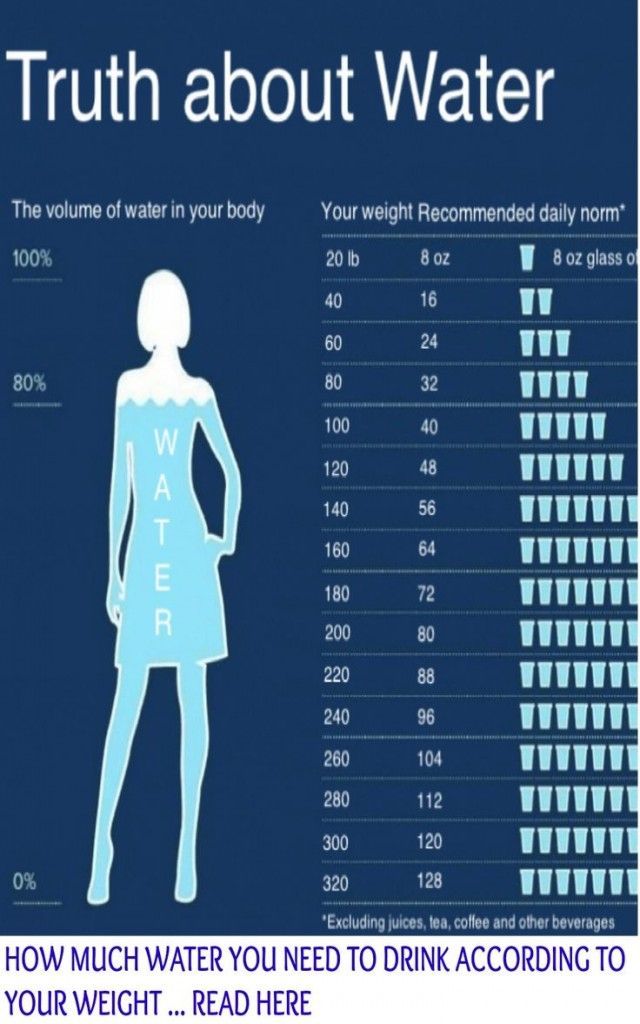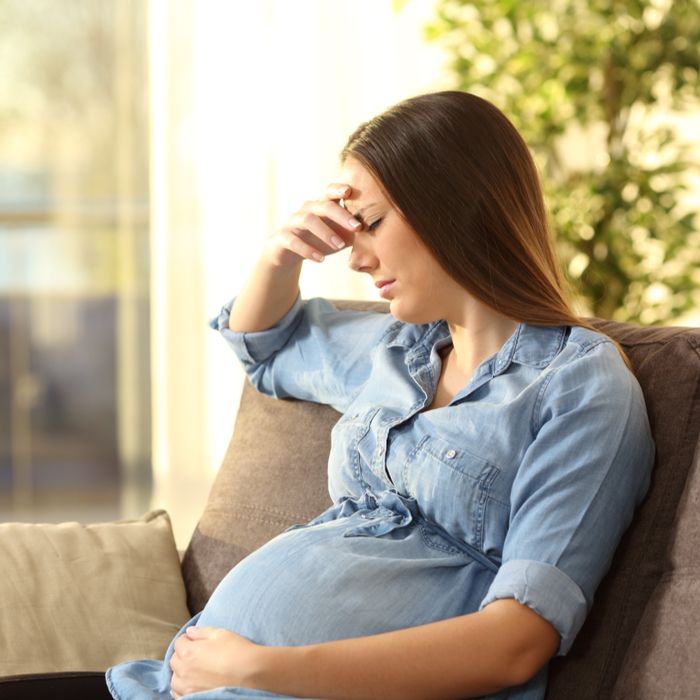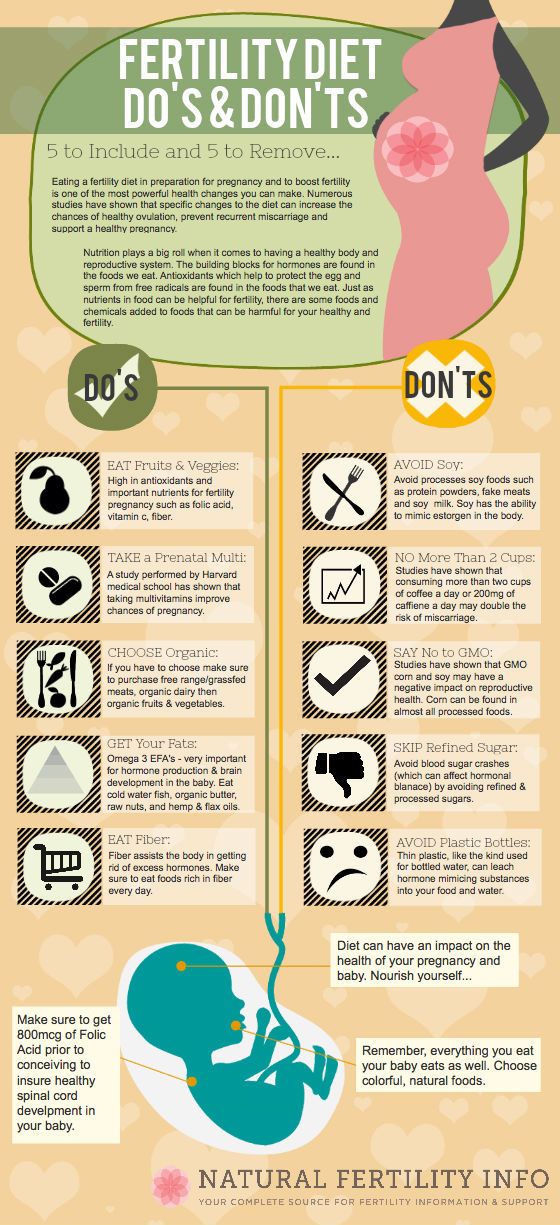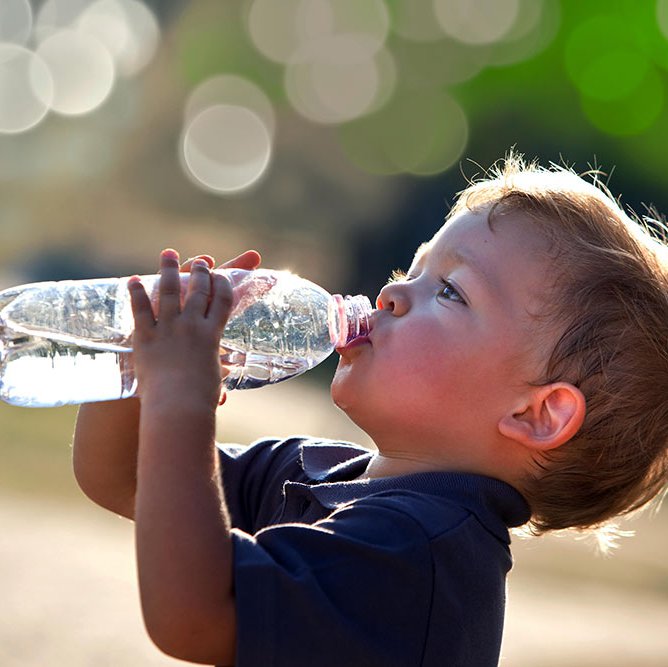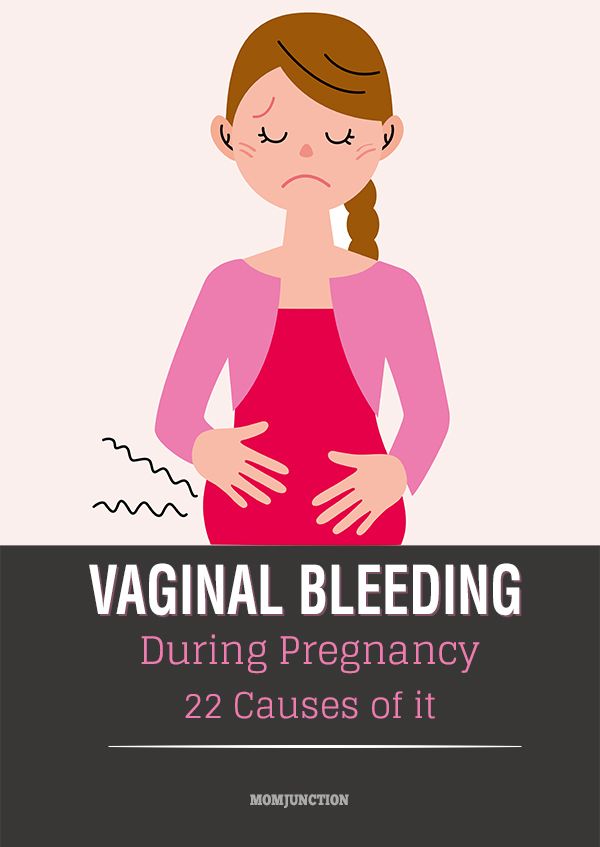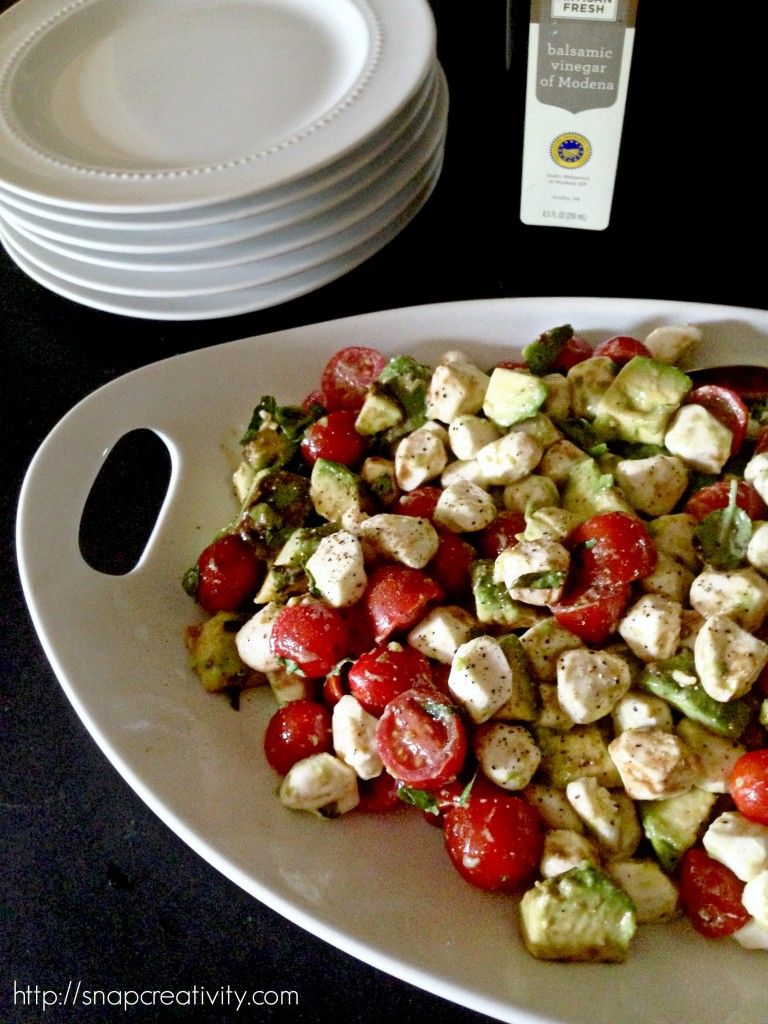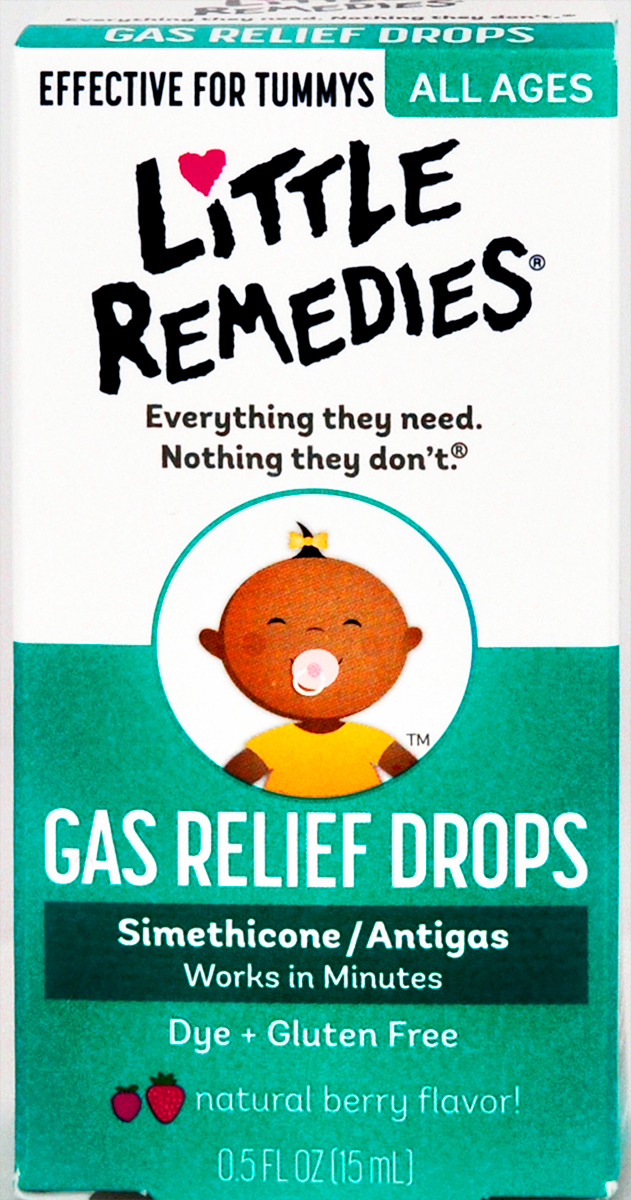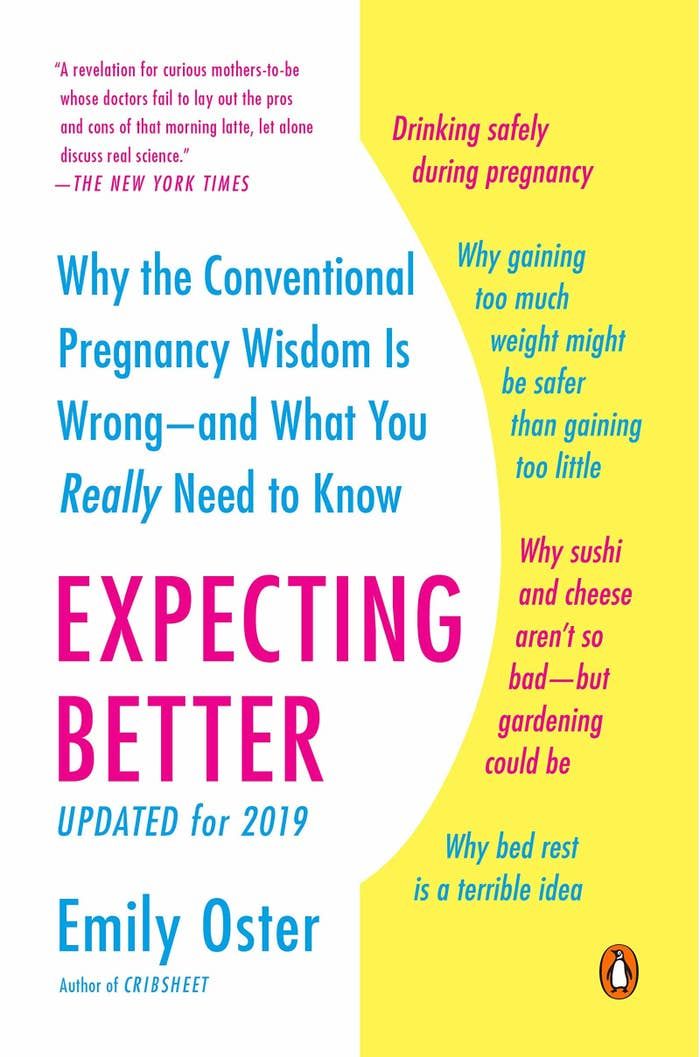How much water should child drink daily
Choose Water for Healthy Hydration
By: Janine Rethy, MD, MPH, FAAP
All living things need water to survive. Along with milk, plain water is the best drink choice for kids. Why? It's super healthy with zero calories & no added sugar. It good for the body - keeps joints, bones and teeth healthy, helps the blood circulate, and can help kids maintain a healthy weight into adulthood. Being well hydrated improves mood, memory and attention in children . And it's economical – tap water is much less expensive than sports drinks, sodas and juice.
Here are some tips on how to help your family choose water.
How much water do children need?
At around 6 months, babies can be introduced to water. They only need about 4-8 ounces per day until they are a year old because the rest of their liquids are coming from breastmilk or formula.
To stay well hydrated, children ages 1-3 years need approximately 4 cups of beverages per day, including water or milk. This increases for older kids to around 5 cups for 4-8 year olds, and 7-8 cups for older children.
It should be noted that these amounts vary by individual and may need to be adjusted depending on levels of activity and environmental conditions like heat and humidity.
How to help your family choose water
Water doesn't have to be boring! There are plenty of ways to entice everyone in the family to drink healthy and stay hydrated throughout the day. Being a good role model yourself is a great way to help make water part of your children's routine and gets them in the habit of drinking water before they're thirsty. Here are a few twists to add some fun:
Infuse water with lemons, berries, cucumber or mint for some added flavor. This is an easy way to keep the whole family coming back for refills.
Keep fruits and vegetables that are high in water content handy - and there are plenty of them. Some of the best vegetables to choose from are cucumber, zucchini, iceberg lettuce, celery, and tomato.
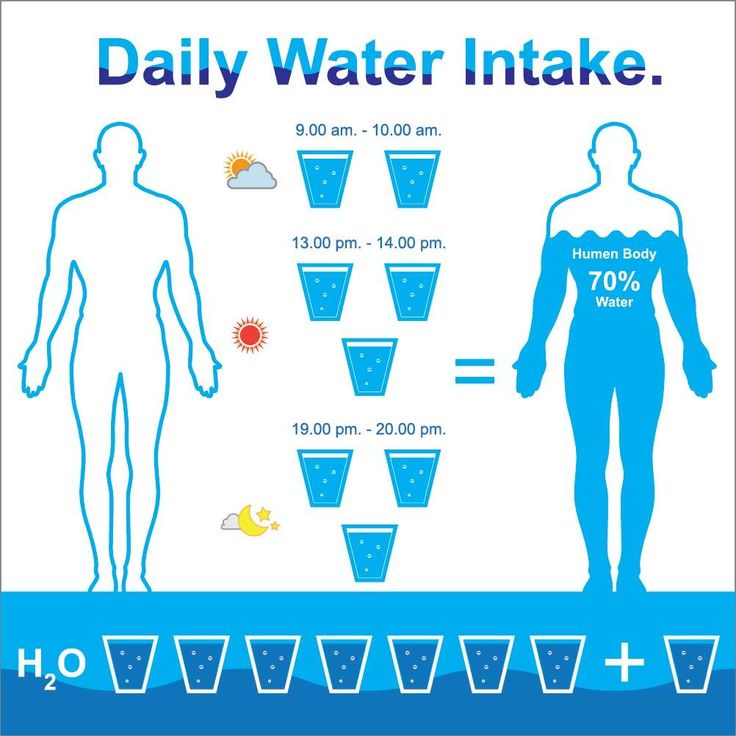 Top fruits include watermelon, cantaloupe, strawberries, blueberries, and grapefruit.
Top fruits include watermelon, cantaloupe, strawberries, blueberries, and grapefruit.Freeze fruit inside ice cubes. It dresses up the drinks at any table, and young children can help fill the trays.
Delight kids with special water bottles or cups. Whether it is a personalized sports bottle or a fancy cup with an umbrella or swirly straw, adding a festive touch can go a long way.
Make your own popsicles with pureed fruit for an afternoon cool-down. Make it a fun family activity by using small paper cups. Let your kids decorate them before filling or look for popsicle molds in fun shapes and colors.
Drinks to limit
Water and milk are all the drinks kids need. So don't believe all the hype surrounding many of the other drinks marketed to kids. These usually contain way more sugar than children need in a day and can contribute to poor health. Here's what to avoid:
Sugary drinks: Make a rule: no sugar-sweetened beverages for your children who are less than 2 years of age.
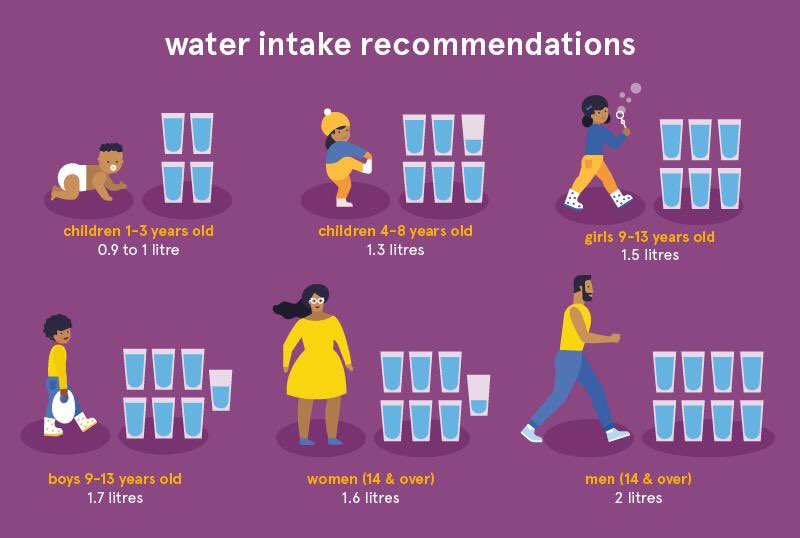 And try to limit them for your older children as much as possible. This includes sports drinks, juice cocktails, sodas, lemonade, and sweetened water. These drinks discourage a habit of drinking plain water, and can add extra “empty calories" to the diet. They can also leave your kids less hungry for the nutritious foods they really need. Added sugars can lead to excess weight gain, dental cavities, diabetes, and more.
And try to limit them for your older children as much as possible. This includes sports drinks, juice cocktails, sodas, lemonade, and sweetened water. These drinks discourage a habit of drinking plain water, and can add extra “empty calories" to the diet. They can also leave your kids less hungry for the nutritious foods they really need. Added sugars can lead to excess weight gain, dental cavities, diabetes, and more.Juice: Even 100% juice should be strictly limited. While it can contain some vitamins, these drinks are high in sugar and calories and low in the healthy fiber found in whole fruit. Because of its sweet taste, once children are offered juice, it can be difficult to get them to drink plain water. Keep these amounts in mind:
Children less than a year should not drink any juice at all.
Children 1-3 years of age should have no more than 4 oz per day.
For older children, juice is only recommended if whole fruits are not available.
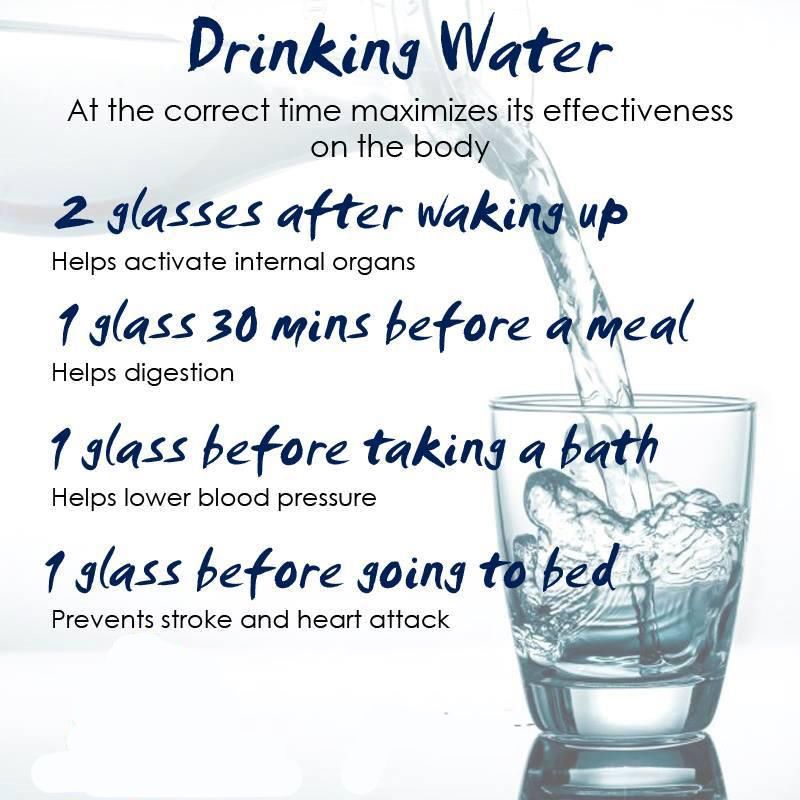 Children ages 4–6 years, no more than 4–6 oz per day, and for children ages 7–18, no more than 8 oz per day.
Children ages 4–6 years, no more than 4–6 oz per day, and for children ages 7–18, no more than 8 oz per day. Flavored milk: Even though you get the benefits of the calcium and vitamins found in milk, flavored milk can be much higher in sugar. These added sugars should be avoided to discourage a preference for sweet flavors, which can make it difficult to have success when offering regular milk.
Stevia- or artificially-sweetened drinks: Because health risks for children from stevia and artificial sweeteners are not well understood, it is best to avoid these drinks. Instead, make water readily available to encourage healthy hydration.
Signs of dehydration
Even with the best habits and intentions, trouble can arise. It is important to know the signs of dehydration so you can address them quickly.
Infants 0-6 months should only be drinking breast milk or formula.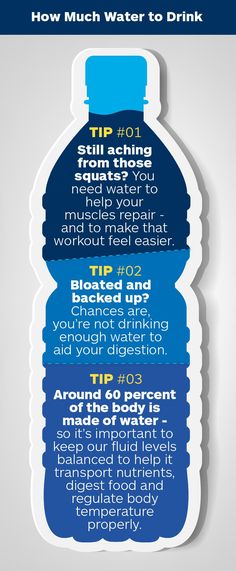 Additional water is not recommended at this age. Around 6 months, complementary foods and small amounts of water can be added. If you are worried that your infant is not getting enough to drink, call your pediatrician immediately. The most noticeable symptoms of dehydration in this age are:
Additional water is not recommended at this age. Around 6 months, complementary foods and small amounts of water can be added. If you are worried that your infant is not getting enough to drink, call your pediatrician immediately. The most noticeable symptoms of dehydration in this age are:
Fewer wet diapers, with the typical range being from 6 to 8
Overly sleepy
Sunken soft spot (fontanelle) on the baby's head
No tears when crying
As children get older, they are better able to tell you how they are feeling. However, it is still necessary to keep an eye on them since children at play often have a hard time stopping. Symptoms in older children include:
Dry lips or sticky mouth
Less urination or dark-colored urine - remember urine should be very light yellow, almost clear
Sleepy and irritable
Flushed skin
In teens, dehydration is a big risk especially if they do high-intensity workouts or heavy team practices. Most common signs for this age group are:
Most common signs for this age group are:
Staying hydrated during sports, exercise or heat
Being active is an important lifestyle choice for every member of the family. But during sports or other physical activities, your child may need additional water to prevent dehydration. For example, when taking part in sports, make sure your child drinks water before, during and after practices or games.
When exercising vigorously or sweating, children from 9-12 years of age generally need to drink about 3–8 ounces of water every 20 minutes to stay hydrated. Teens need to drink about 34–50 ounces per hour. It is helpful to stay well hydrated in the days and hours before activity begins. While playing at the park may not bring the same level of intensity, if your child is sweating, make sure they are adequately replacing fluids.
If vigorous exercise extends beyond 1 hour in a day or your child is sweating a lot, electrolyte-supplemented beverages may be necessary.
Heat-related illnesses
If your children do become dehydrated or overwhelmed in the heat, they are at risk for heat exhaustion and heat stroke. Here's how you can tell the difference.
Heat exhaustion occurs from excessive sweating, causing dehydration and for the core body temperature to rise. If this happens, move your child out of sunlight to a cool place, rehydrate with cool water, wear light, cool clothes and use cold towels or ice packs to lower your child's body temperature. To be safe, if your child's symptoms are concerning or last more than an hour, talk with your pediatrician.
Heat stroke. Sometimes called sun stroke, heat stroke is the most serious. It is when the body overheats to a point where it begins to shut down. If your child is confused or unresponsive, has a rapid pulse, or a temperature over 103 degrees, immediate medical treatment is needed.
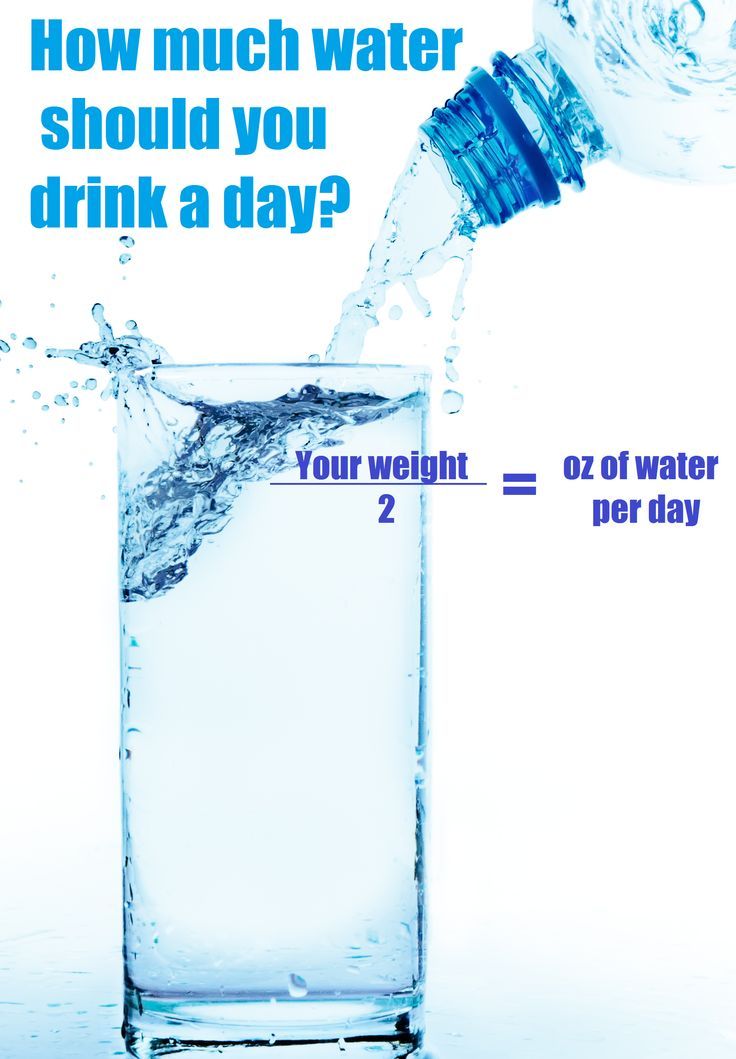
Remember
Staying properly hydrated keeps the body and mind running efficiently and feeling strong. Serve water with meals and snacks, and take those extra few minutes to pack the water bottles before your family heads out the door. Helping your children choose water first, and modeling this choice yourself, builds healthy habits that will pay dividends for a lifetime!
More information
- Recommended Drinks for Young Children Ages 0-5
- How Children Develop Unhealthy Food Preferences
-
How to Reduce Added Sugar in Your Child's Diet: AAP Tips
About Dr. Rethy
Janine Rethy, MD, MPH, FAAP, is Division Chief of Community Pediatrics at MedStar Georgetown University Hospital and Assistant Professor of Pediatrics at Georgetown University School of Medicine. She serves as Medical Director for the Kids Mobile Medical Clinic and FITNESS programs providing integrated, place-based primary care and wrap-around services through a health equity lens. Dr. Rethy is a member of the AAP's Council on Community Pediatrics and Sections on Obesity and Breastfeeding. She serves as an AAP COACH (Childhood Obesity Advisor for Continuing Health). For the AAP DC Chapter she serves as a CATCH co-facilitator and was recently elected as an at-large Board Member.
Dr. Rethy is a member of the AAP's Council on Community Pediatrics and Sections on Obesity and Breastfeeding. She serves as an AAP COACH (Childhood Obesity Advisor for Continuing Health). For the AAP DC Chapter she serves as a CATCH co-facilitator and was recently elected as an at-large Board Member.
The information contained on this Web site should not be used as a substitute for the medical care and advice of your pediatrician. There may be variations in treatment that your pediatrician may recommend based on individual facts and circumstances.
How Much Water Should Kids Drink?
Just like adults, kids need plenty of water to carry out daily functions. As a parent, it can be hard to gauge how much water your child needs to stay properly hydrated. To help you get started, we’ve created a guide to help you learn why water is so important, and how much of it your child needs to drink every day.
Why do kids need to drink water?
Water is one of the most important parts of any child’s diet. It is essential in keeping bowel movements regular and helping to prevent conditions such as urinary tract infections and kidney stones.
It is essential in keeping bowel movements regular and helping to prevent conditions such as urinary tract infections and kidney stones.
Water also allows us to regulate our body temperature. When our bodies heat up—because of a hot day or because of physical activity, for instance—the brain alerts the sweat glands to produce sweat. When children don’t drink enough water, The body cools itself by the evaporation of sweat from the skin. If dehydrated, their bodies can’t sweat enough to stay cool.
How Much Water to Drink a Day?
At CHOC, we recommend that kids drink the amounts of water below according to their age. It is important to note that children should drink the number of 8-ounce cups of water equal to their age, with a minimum of 64 ounces of water for children over the age of 8. These amounts do not include other beverages they may consume in a day such as milk and juice.
Water intake
| Age in years | Number of 8 oz cups |
| 1 | 1 |
| 2 | 2 |
| 3 | 3 |
| 4 | 4 |
| 5 | 5 |
| 6 | 6 |
| 7 | 7 |
| 8 | 8 |
| 9 and older | 8 |
| Eight 8 oz cups = 2 Liters | |
Water intake by weight
While we recommend using age as the primary criteria for toddlers and younger children, weight can be a helpful metric when determining water intake for older children and teenagers. When it comes to weight, it is a general rule that you should try to drink close to half an ounce of water for each pound you weigh. For example, if your child weighs 125 lbs., they should be drinking close to eight 8-ounce glasses a day, for a total of 64 ounces of water.
When it comes to weight, it is a general rule that you should try to drink close to half an ounce of water for each pound you weigh. For example, if your child weighs 125 lbs., they should be drinking close to eight 8-ounce glasses a day, for a total of 64 ounces of water.
When can a baby drink water?
Babies should drink only breast milk or formula until they reach six months. After the six-month mark, you can start to give your baby 2-3 ounces of water at a time, in addition to breastmilk or formula. Breastmilk or formula will continue to be their primary drink until they reach the age of twelve months. After that point, you can begin to slowly transition your toddler to water as their primary beverage.
Signs of dehydration
Dehydration occurs when a child loses more fluid than they consume, and their bodies no longer have enough water to carry out normal functions. Dehydration may happen as a result of physical exercise, vomiting, diarrhea, fever, or simply not drinking enough water.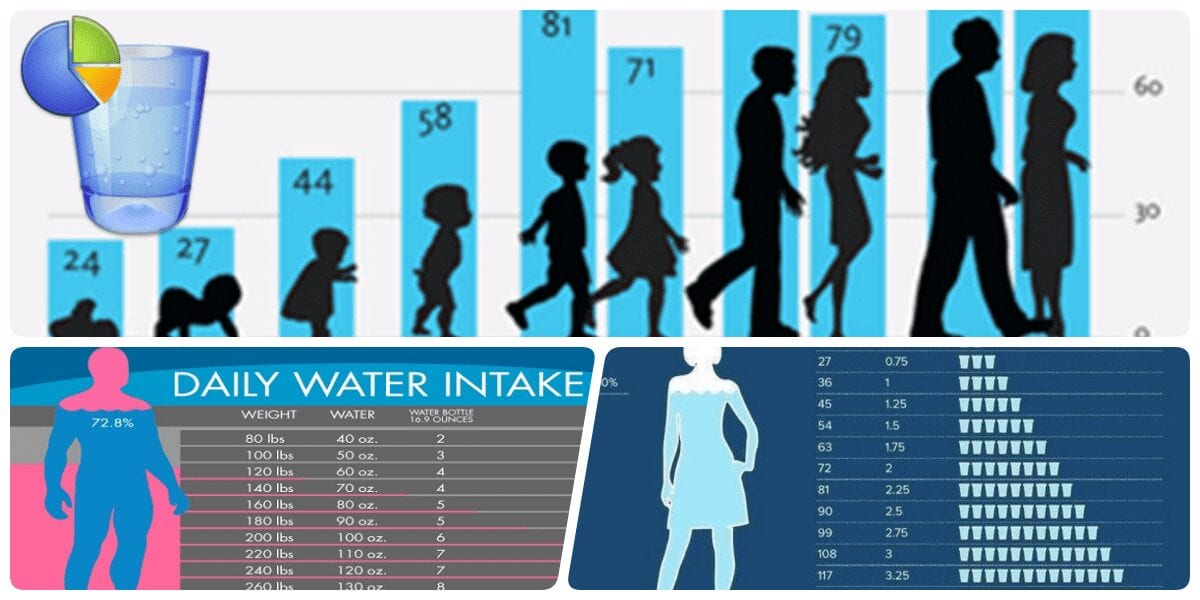
Signs of dehydration in babies
If you are worried that your baby may be dehydrated, please call your pediatrician immediately. The most noticeable signs of dehydration in babies include:
- Fewer wet diapers
- Increased signs of tiredness
- Sunken soft spot (fontanelle) on the baby’s head
- No tears when crying
Signs of dehydration in kids
A child will likely not know they are thirsty until they are already dehydrated, so it is important to keep a close eye on them. This is especially true for active children as well as during warmer weather. Signs of dehydration in kids include:
- Dry lips
- Sticky mouth
- Infrequent urination or dark-colored urine
- Sleepy and irritable
- Flushed skin
- Light headedness
- Cramps
- Thirst
- Headache
- Rapid pulse
- Feeling excessively hot or cold
How to get kids to drink more water
Getting your child to drink enough water can sometimes be a challenge.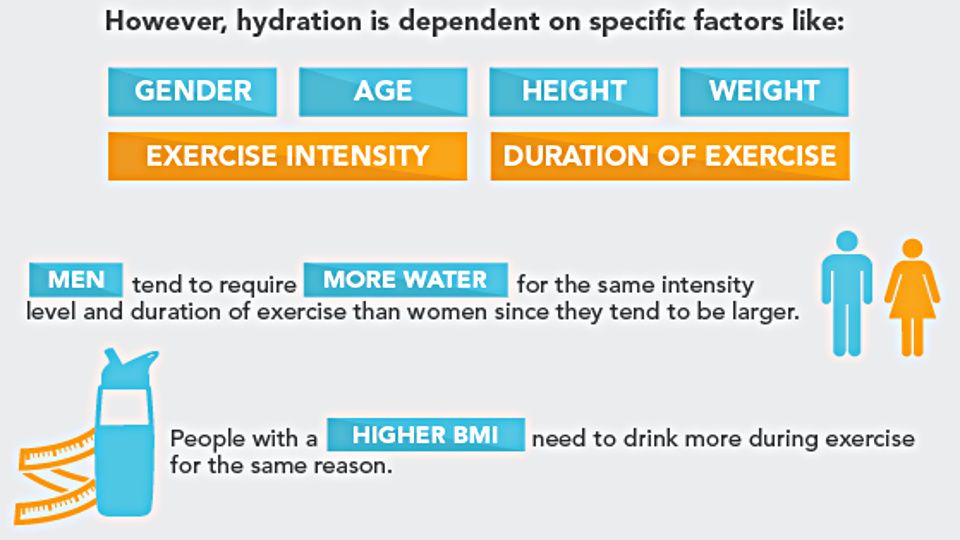 Here are some fun and creative ways to make sure your child stays hydrated:
Here are some fun and creative ways to make sure your child stays hydrated:
How to get kids to drink more water
Water and milk or milk alternatives should be the staple drinks in your child’s diet. While a little bit of juice or chocolate milk here and there is okay, it is important that the drinks you choose are low in sugar. Beverages that are high in sugar can discourage kids from drinking water and can even make them less hungry for nutritious food. When selecting a beverage for your child, here are some sugary drinks to limit:
- Juice – 100% fruit juices are loaded with vitamins but also contain a lot of sugar. Many juices include artificial flavors, colors and added sugars; these drinks should be given in limited quantities to children.
- Soda – Sodas are loaded with sugar and sometimes caffeine. Even ‘diet’ sodas are not recommended for children.
- Flavored milk – Milk alone has lactose, which is a natural sugar.
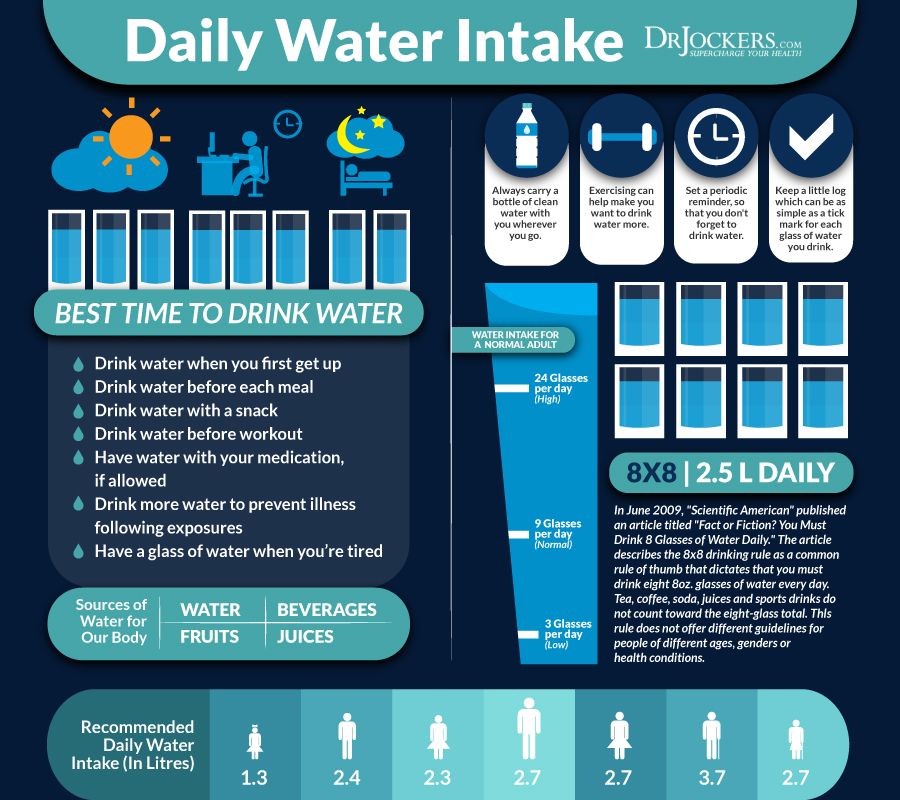 Most flavored milks like chocolate, vanilla and strawberry are loaded with extra sugars and should be avoided unless for a special treat.
Most flavored milks like chocolate, vanilla and strawberry are loaded with extra sugars and should be avoided unless for a special treat. - Artificially Sweetened Drinks – This includes any beverage labeled as “diet.”
- Energy Drinks – These are usually loaded with caffeine, sugar and other ingredients like taurine that should be limited for a growing child. These drinks can also lead to dependence and should not be given to children.
- Sports Drinks – They are designed to replace minerals (electrolytes), salts and sugars during and after intense exercise and should not be used on days when kids are not exerting a lot of energy.
- Caffeinated Beverages – This includes most coffees and teas.
Are plastic water bottles safe for kids?
According to the NIH, plastic water bottles, although convenient, can release harmful toxins into our water. The chemicals that are most concerning to the experts are phthalates and bisphenol A (BPA).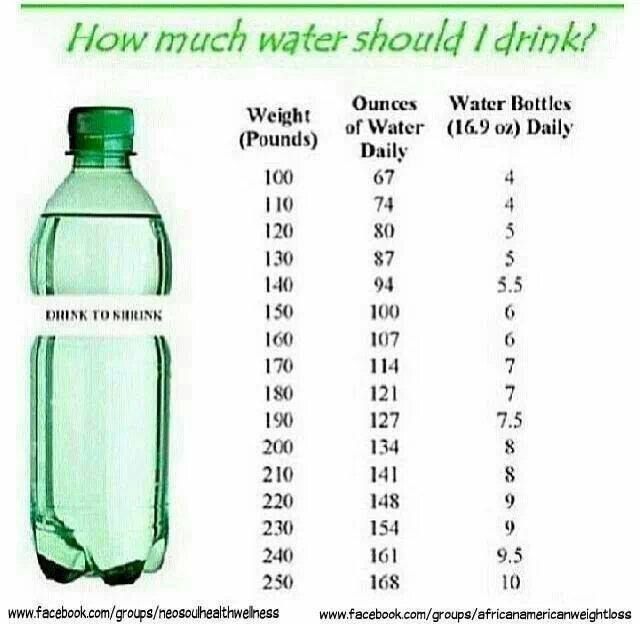 Early studies show that these chemicals may affect the development of children including brain development, hormones, or chemicals that regulate metabolism. The immune system, as well as the reproductive system, may also be affected. To be on the safe side, CHOC recommends parents choose BPA and phthalate-free water bottles for children.
Early studies show that these chemicals may affect the development of children including brain development, hormones, or chemicals that regulate metabolism. The immune system, as well as the reproductive system, may also be affected. To be on the safe side, CHOC recommends parents choose BPA and phthalate-free water bottles for children.
What is the best type of water to give a child?
There are many different types of water on the market from tap to expensive artesian water with high levels of alkalinity. Tap water is the most affordable type of water and in most cases, in the United States, tap water is safe for children. Tap water usually includes small levels of fluoride, so take that into consideration when consuming larger volumes of tap water. Some bottled waters are simply filtered tap water and others are sourced from natural springs that contain minerals. All of these forms of water are safe for children in moderation. Water that comes from natural sources and bottled in BPA & phthalate-free plastics are the best choice for children.
Above all, it is important to remember to act as a good role model by demonstrating proper hydration habits for your child. If you suspect your child may be dehydrated, CHOC’s Urology program has dedicated doctors, specialists and treatments just for kids.
Daily norms of water consumption for children.
June 24, 2019
May 31, 2021
4 minutes
50845
ProWellness
Contents
- Why is it important for children to drink water?
- Symptoms of lack of fluid in a child
- How to choose water for a child?
- How much fluid does a child need per day?
- General Guidelines for Baby Drinking
- Recommended Foods
Disclaimer
Please note that all information posted on the site Prowellness is provided for informational purposes only and is not a personal program, a direct recommendation for action, or medical advice.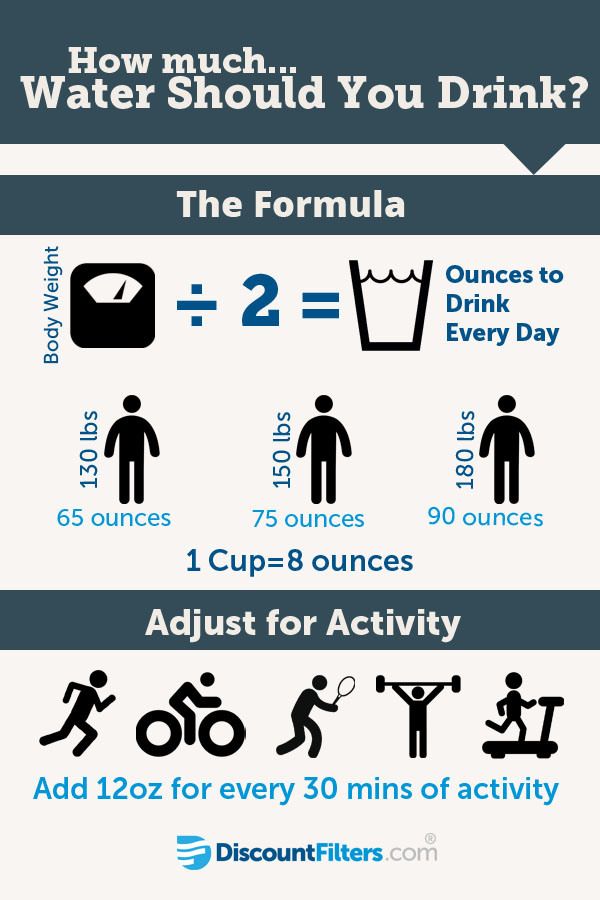 Do not use these materials for diagnosis, treatment, or any medical procedure. Consult your physician before using any technique or using any product. This site is not a specialized medical portal and does not replace the professional advice of a specialist. The Site Owner is not liable to any party who has suffered indirect or direct damage as a result of misuse of materials posted on this resource.
Do not use these materials for diagnosis, treatment, or any medical procedure. Consult your physician before using any technique or using any product. This site is not a specialized medical portal and does not replace the professional advice of a specialist. The Site Owner is not liable to any party who has suffered indirect or direct damage as a result of misuse of materials posted on this resource.
Daily water intake for children.
Without a sufficient amount of fluid, a person will not be able to boast of excellent health. In the formation of the child's body and its immune system, water plays a key role.
Why is it important for children to drink water?
Water has a beneficial effect on the child's body and is involved in the formation of the following processes:
- improved metabolism;
- maintaining normal body temperature;
- reduced risk of allergic reactions;
- mood improvement.

Symptoms of lack of fluid in a child
Any of the following symptoms are observed, that is, a reason to think about the lack of fluid in the child's body:
- Fatigue.
- Bad mood for no reason.
- Weakened immunity.
- Allergic reactions.
- Dry skin.
- Dryness and cracking of the lips.
- Abdominal pain, problems with stool and digestion.
- Pain in muscles and bones.
- Oral and gum problems.
- Pale skin.
- Infrequent urination.
Vitamin D3 - Essential Vitamins will help increase immunity in a child. It ensures normal growth and development of bones, promotes muscle tone, is necessary for the normal functioning of the thyroid gland, is involved in the regulation of blood pressure, plays a huge role in the prevention of allergic diseases in adults and children.
Introducing a tasty treat that will become an additional source of vitamins for your child - Ditops Fruit Chewable Tablets with Vitamins A, C and D.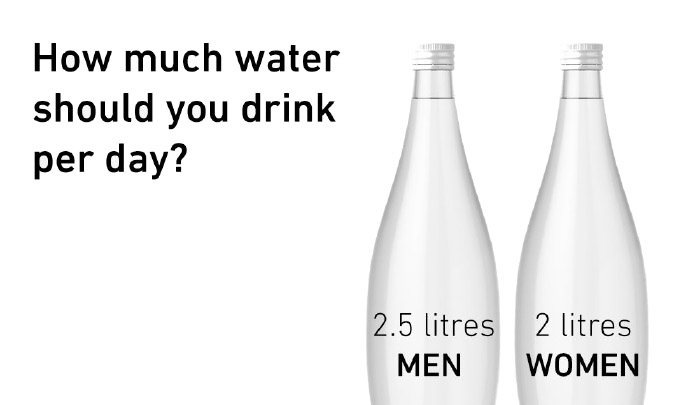 Three main vitamins for every day in a convenient form will be good helpers for strengthening the immune system and the growth of the child.
Three main vitamins for every day in a convenient form will be good helpers for strengthening the immune system and the growth of the child.
How to choose water for a child?
Water for children should have a special balanced composition. The concentration of salts in it should be reduced, preservatives and dyes should be absent.
Attention! A water bottle must have an inscription that the product is intended for baby food, and a mark that this is water of the highest category.
Sweet or carbonated drinks are undesirable, they can cause pain in the abdomen, bloating, tooth decay. They are contraindicated for newborns.
How much liquid does a child need per day?
The main criterion for calculating the norm of water for a child is his age. So:
- The first months of a child's life do not need to be specially supplemented with water.
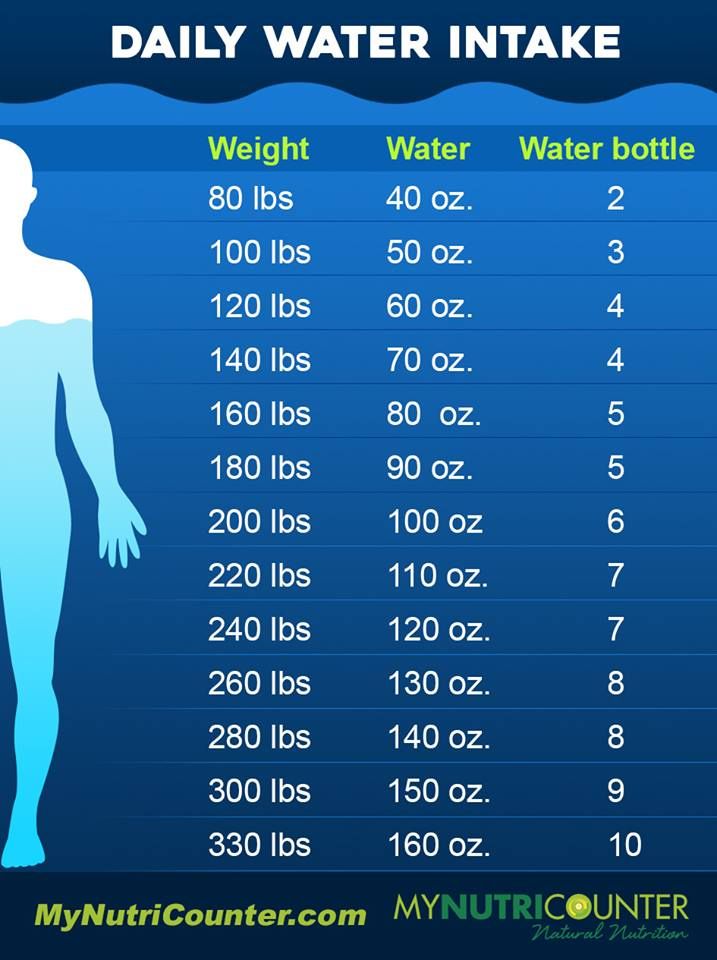 The right amount of fluid is already in breast milk. A baby will need 100-170 ml of water per day.
The right amount of fluid is already in breast milk. A baby will need 100-170 ml of water per day. - From six months to a year, the baby needs to drink more, up to 260 ml per day.
- From one to three years old, the baby needs to drink 300-400 ml of liquid.
- From four to five years old, it is worth offering the baby up to 800 ml of drink per day.
- After five years, he is supposed to drink a liter of water a day.
Attention! The required volume of fluid consumed includes only water. Juices, soups, broths, teas, milk do not replace water.
General recommendations for a child's drinking regimen
When monitoring the drinking regimen of crumbs, it is worth considering additional factors:
- If a child drinks water above the norm, then it is not necessary to forbid him to do this and take away the bottle.
- A sick child needs to drink more fluids, so the infection will quickly leave the body.
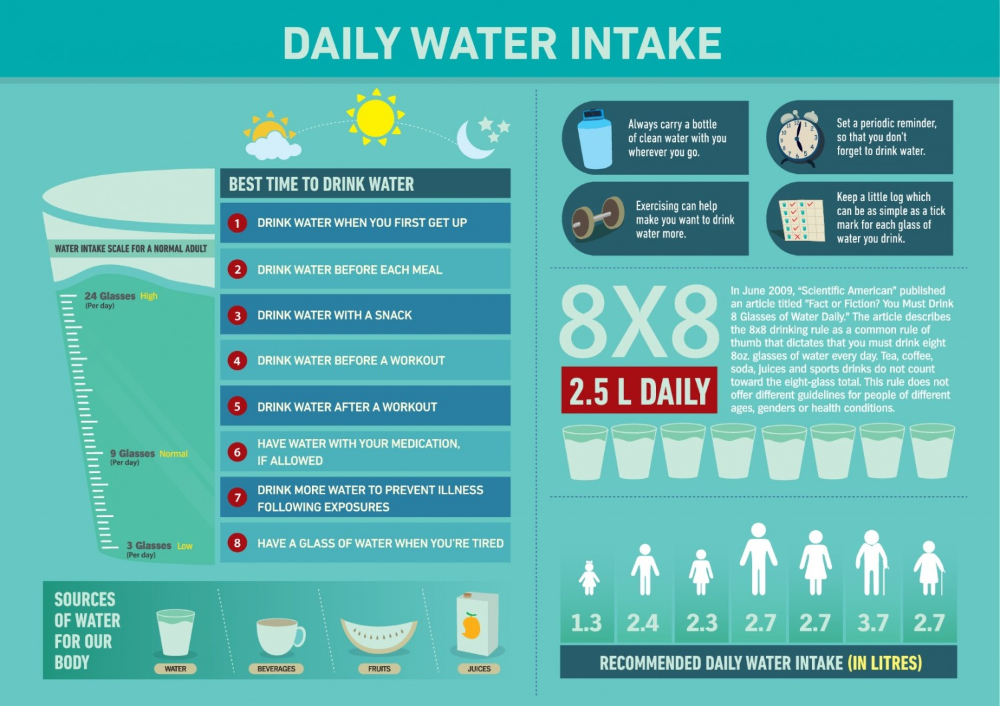
- A bottle-fed baby needs to drink fluids more frequently and more than a breast-fed baby.
- When in a room with a temperature above 25°C, the crumbs need to be supplemented between meals.
- If the child has eaten dry or solid food, the need for water increases.
- When the baby is physically active, his need for fluid increases.
- An adult should take a bottle of water with him for a street walk that involves the active movement of a child.
- Have a water cooler, carafe or bottle of water in front of the baby so he can pour himself a drink.
Pay your attention to Tea cocktail (apple and peach) - Yoo Go with juicy apple and tender peach, bright strawberry and Siberian mint. Natural tea cocktail with excellent aroma and rich taste will be a good companion for your family in any weather.
Establishing a drinking regimen for a child is very important for his health. In the case of chronic diseases or diseases of the internal organs, the situation must be additionally discussed with the doctor.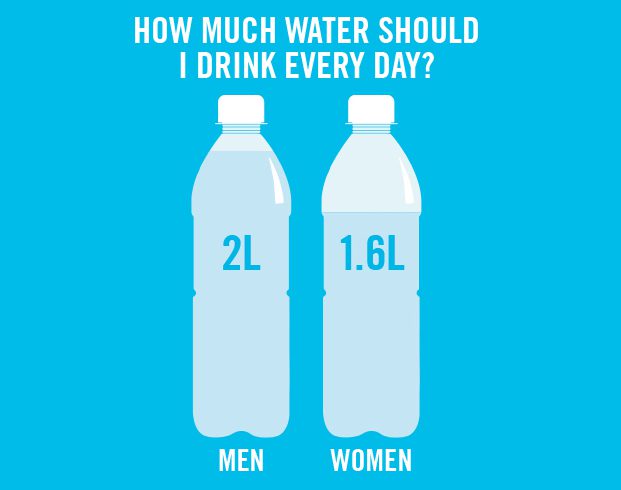
Disclaimer
Please note that all information posted on the site Prowellness is provided for informational purposes only and is not a personal program, a direct recommendation for action, or medical advice. Do not use these materials for diagnosis, treatment, or any medical procedure. Consult your physician before using any technique or using any product. This site is not a specialized medical portal and does not replace the professional advice of a specialist. The Site Owner is not liable to any party who has suffered indirect or direct damage as a result of misuse of materials posted on this resource.
Expert: Maria Elagina Business Profi of Siberian Wellness and nutritionist in cosmetics
Reviewer: Ekaterina Vorobieva Adept of a healthy and active lifestyle
Read other articles on similar topics
water
Rate the article
(3 votes, average 3)
Share the article
How much water should the child drink and what water should the child be given?
Child's health is one of the main concerns of parents.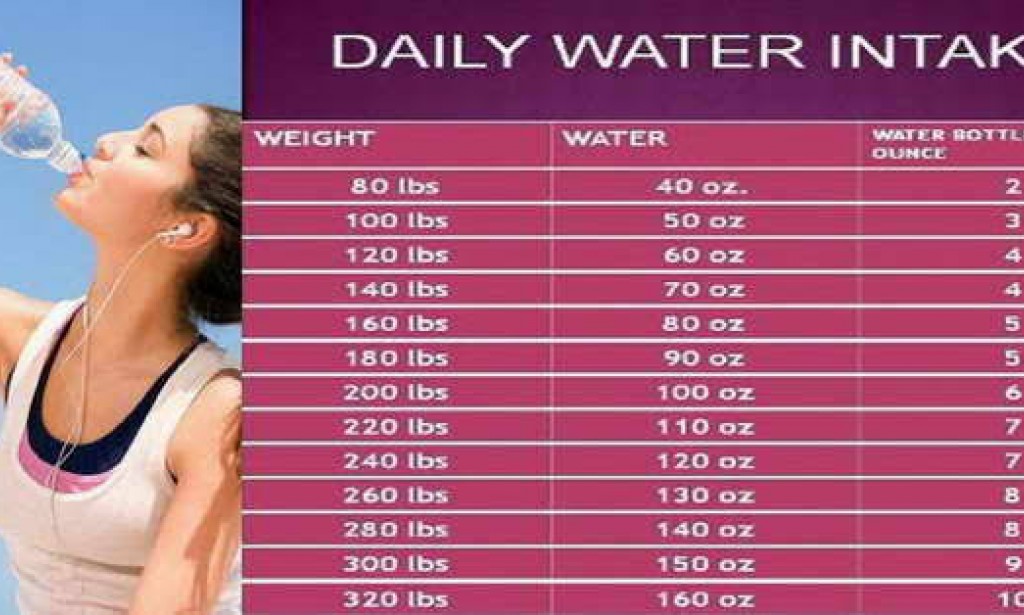 Did you know that water plays a key role in the formation of the child's body and strengthening immunity? In this article, we will tell you how much life-giving liquid per day is recommended for children of different ages to drink and why this is important.
Did you know that water plays a key role in the formation of the child's body and strengthening immunity? In this article, we will tell you how much life-giving liquid per day is recommended for children of different ages to drink and why this is important.
Science has long proven the great importance of drinking the required amount of water per day. And this is not surprising. So, the body of an adult is 60-75% water, and a child is 80-9% water.0%. Water is easily absorbed by the body and has a strong influence on all processes occurring in it. Its lack leads to a deterioration in well-being, a decrease in immunity, and even weight gain. Often, the development of certain diseases is just a signal that our body does not have enough water! This liquid is especially important for children's health. And the sooner you help your child form the habit of drinking water regularly, the easier it will be for him to maintain a healthy lifestyle in adulthood.
As we have already said, water has a beneficial effect on health and is involved in vital processes.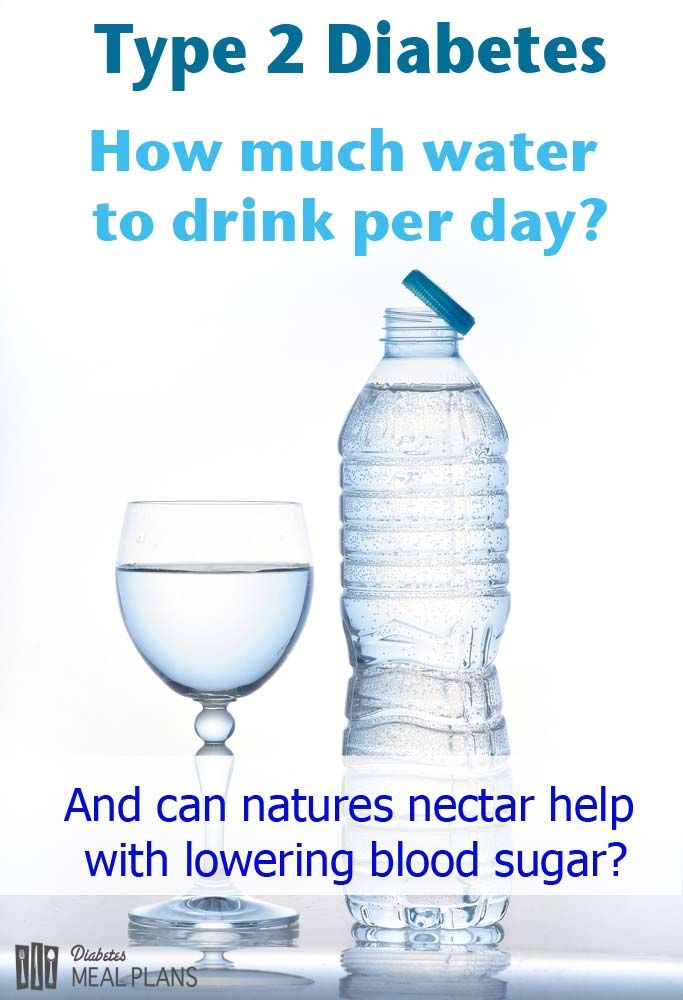 Regular consumption of a sufficient amount of water improves metabolism, maintains normal pressure and body temperature, reduces the risk of allergic reactions, and even has a positive effect on mood. Dehydration leads to rapid fatigue, fatigue, and the development of a number of diseases. Especially dangerous is the lack of water at elevated body temperature and on hot days.
Regular consumption of a sufficient amount of water improves metabolism, maintains normal pressure and body temperature, reduces the risk of allergic reactions, and even has a positive effect on mood. Dehydration leads to rapid fatigue, fatigue, and the development of a number of diseases. Especially dangerous is the lack of water at elevated body temperature and on hot days.
Note!
The importance of keeping in drinking water the optimal ratio of biologically essential macroelements (calcium, magnesium, phosphorus) and some microelements (selenium, potassium, zinc, iodine, fluorine) is recognized at the state level. Physiologically high-grade water plays a particularly important role in the diet of children, pregnant women, and the elderly [1] .
Here is just a small list of changes in the body, which leads to lack of water:
- infections and allergic reactions;
- dry skin;
- kidney stones;
- digestive and metabolic problems;
- pain in the joints and back;
- problems with teeth and gums.
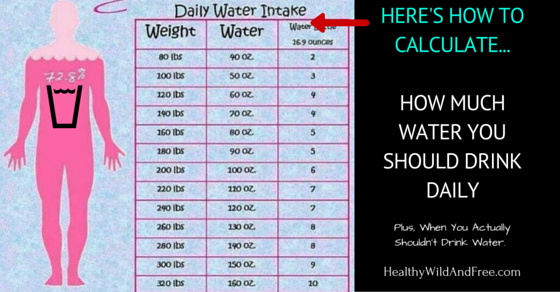
In short, water is a natural component of our body. For children, the correct regimen and certain volumes of consumption of this fluid are especially important, since it is in childhood that all body systems are formed. And the sooner the child gets used to the regular use of water, the less often you will visit the doctor with him.
What kind of water to give your baby
The kind of water you give your baby will affect his health and well-being. Naturally, ordinary untreated tap water is out of the question, even if it is boiled. Water from wells or a pump room, as well as bottled water for adults, will not work either. The thing is that special regulatory requirements are imposed on children's drinking water and water for preparing baby food, which are contained in SanPiN 2.1.4.1116-02 (as amended on June 28, 2010).
Baby water:
- must have a balanced mineral composition. However, the amount of salts and their concentration in children's water, according to the norms, is much lower than in water for adults;
- must be free of preservatives, including carbon dioxide and silver;
- if we are talking about bottled water, then the label must contain information that it is “water for baby food” and “water of the highest category”, as well as information that the product has been registered with Rospotrebnadzor.
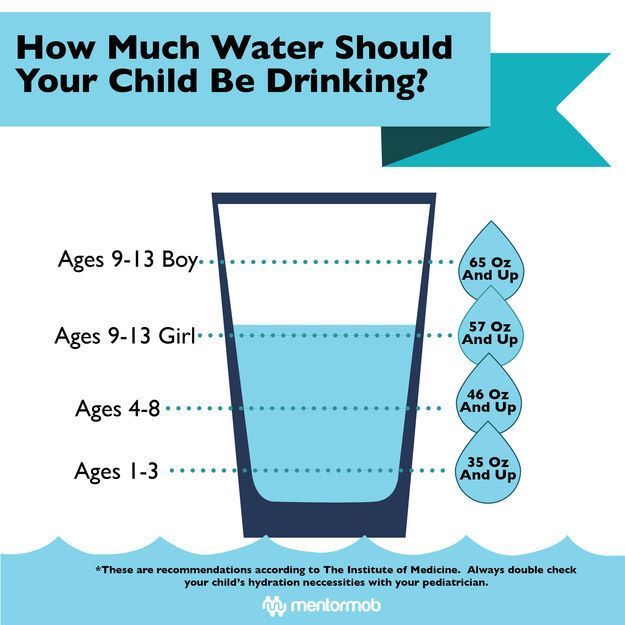
Strike 9000
1.5–7 m-EKV/l
alkalinity 263
0.5–6.5 mg-exp
If you prefer bottled baby water, be sure to read the label. It must necessarily indicate: the type of water, its category, information on state registration, chemical and physiological composition, storage conditions, date of manufacture, place of collection and, of course, expiration date.
Important!
Not every bottled water has the right to be called children's water. To do this, the label must necessarily indicate - "for baby food." According to the experts of the quality monitoring system "Roskontrol" [2] , the phrases "for children" or "from the first days of life" often found on bottles of water are just a marketing ploy that does not impose on the manufacturer the obligation to follow the requirements of the legislation for the mineral composition and security.
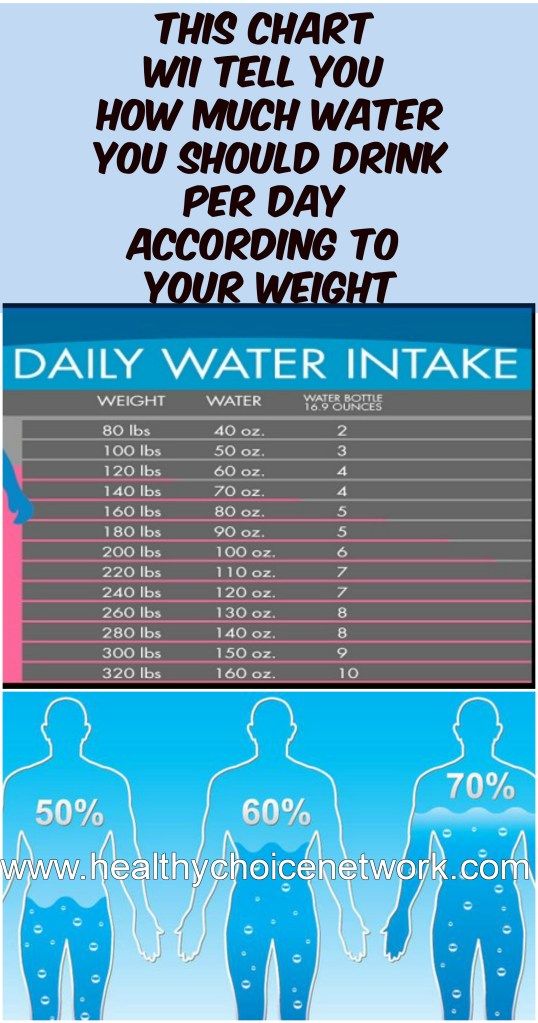 And, of course, the presence of children's drawings is also not a confirmation that the contents of the bottle meet the quality standards for children's drinking water.
And, of course, the presence of children's drawings is also not a confirmation that the contents of the bottle meet the quality standards for children's drinking water. Perhaps it is precisely because of the high regulatory requirements that manufacturers are afraid to put the cherished words “for baby food” on the labels, thereby relieving themselves of responsibility. According to research by the non-profit organization Roskontrol conducted in 2016, out of 11 samples of bottled water from popular brands, which is positioned by manufacturers as children's, only three were tested: this is only 27% of the total number of tested samples. In the rest, an unbalanced salt composition was revealed, as well as a significant excess in the number of microorganisms that actively multiply at a temperature of 37°C, the content of chloroform, and even traces of mercury were found, although in small quantities [3] .
Important!
Heavy metals, which, unfortunately, can be found in many foods, tend to accumulate in the body.
 Accordingly, the norms are developed taking into account the total risk, which may have a delayed effect.
Accordingly, the norms are developed taking into account the total risk, which may have a delayed effect. Although a lot of time has passed since the testing by Roskontrol specialists, we were unable to find information on how exactly these shortcomings were corrected by manufacturers and whether they were corrected at all. In connection with such complaints about the quality of children's bottled water, many experts recommend giving children water purified in household filters intended for children, without the use of cartridges containing silver ions, which can disrupt the child's intestinal microflora and lead to the development of dysbiosis. Moreover, the use of household filters allows not only to purify water from microorganisms, excess salts, but also to enrich it with microelements necessary for the child, such as fluorine and magnesium.
Norm of water consumption for a child
How much water does a child need to drink? The consumption rate will depend on age, weight, mobility, physical condition and even weather conditions.
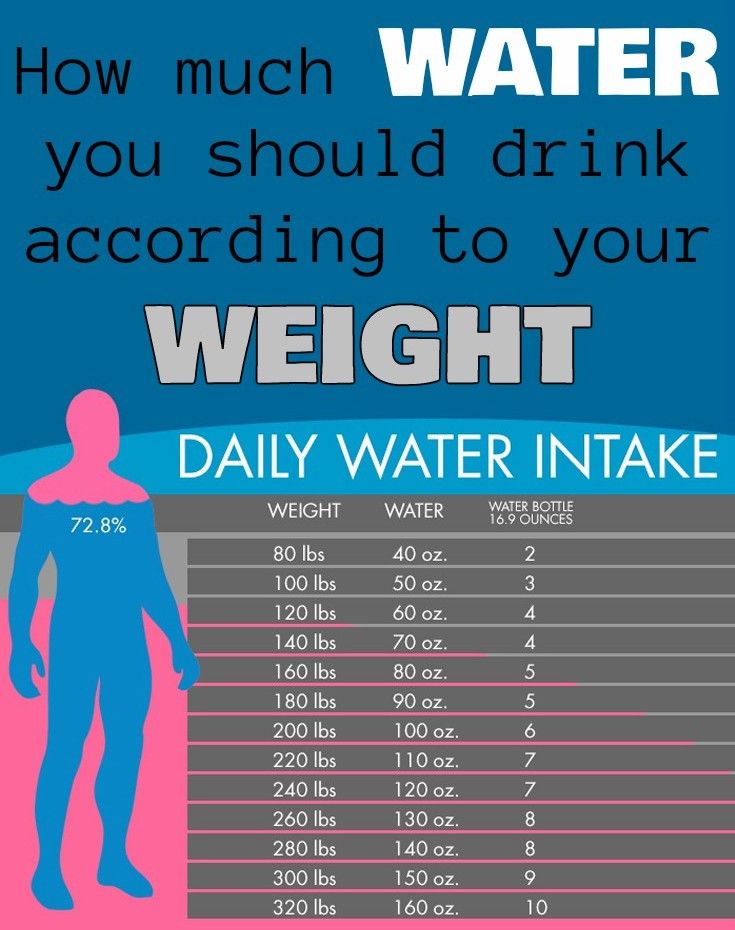
From birth to one year old
Babies up to four to six months old, as a rule, get all the nutrients, including water, from their mother's milk. During this period, doctors do not recommend drinking water for babies. First of all, because it is at this time that the intestinal microflora is formed and any intervention can affect the process. Moreover, water fills the stomach and creates a false feeling of fullness - because of this, the baby may not eat up.
The composition of mother's milk is perfectly adapted to the needs of the child. And if the baby is hot, he is more often applied to the breast and as a result receives a lot of foremilk, which is 88-90% water. It is important that the mother herself consumes the required amount of water and does not feel thirsty!
However, doctors allow giving babies from three months a little water on a spoon - but only in hot weather, when the child sweats or when his mouth dries up. In no case is it necessary to force, it is important to offer: if the baby wants, he will drink.
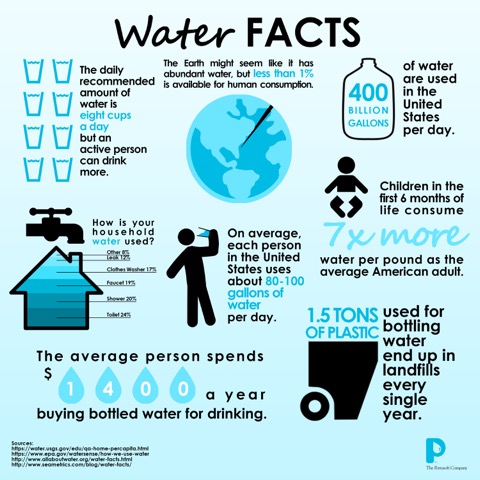 This should be done between feedings. Water can also be given when the child has the following problems:
This should be done between feedings. Water can also be given when the child has the following problems: - constipation;
- diarrhea or vomiting;
- hiccups;
- fever.
But this should also be done carefully, without persistence.
But if the child is formula-fed or mixed-fed, then water has to be used for formula preparation and additionally given between feedings from the first day. But remember, the baby can drink no more than 100-200 ml per day.
In general, babies under one year old need 50 ml of water per kilogram of body weight, but remember that approximately 75% of their water comes from milk and food. Therefore, in order to calculate how much of this life-giving fluid is needed to maintain water balance, it follows from the daily requirement indicator (50 ml, multiplied by the weight of the child) subtract the amount of water received with food (the volume of milk drunk in ml, multiplied by 0.75).
1 to 3 years
When solid foods are introduced into the baby's diet, the need for water increases.
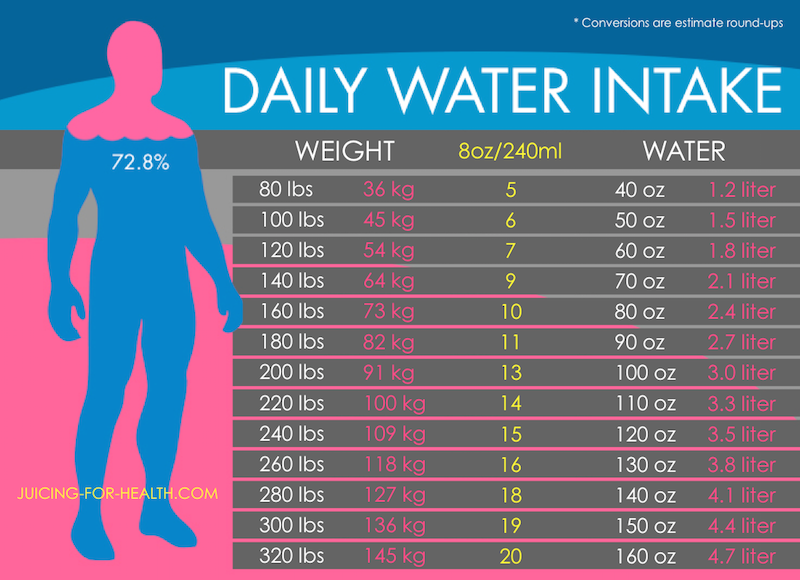 At the same time, children begin to actively move, so the intensity of fluid loss increases. You can calculate the daily water requirement in the same way: a child needs 50 ml of water per kilogram of weight. In this case, we are talking about pure non-carbonated water: juice, compote, tea and other similar drinks are not taken into account.
At the same time, children begin to actively move, so the intensity of fluid loss increases. You can calculate the daily water requirement in the same way: a child needs 50 ml of water per kilogram of weight. In this case, we are talking about pure non-carbonated water: juice, compote, tea and other similar drinks are not taken into account. Here are some signs that a child is not getting enough water:
- dry lips;
- dry and/or pale skin;
- diaper not wet after six to eight hours of sleep;
- the child shows anxiety, cries more often, but without tears;
- urine is dark or has a strong odor;
- the child is drinking water greedily.
Three to seven years
The older the child, the more water he drinks. By school age, this volume will already reach 1.2–1.7 liters of water per day. At the same time, from the age of four, the nervous and skeletal system begins to actively form in the baby.
 Therefore, it is important that the water contains the required amount of fluorine and magnesium
Therefore, it is important that the water contains the required amount of fluorine and magnesium During this period it is important to teach the child to drink regularly. Care should be taken to ensure that water is always available. You can take handy bottles with you for walks.
Important!
For children with heart disease, kidney disease, diabetes mellitus, the drinking regimen must be indicated by a doctor.
Seven years and older
At this age, the norm of water consumption is 1.7-2.5 liters of water per day. When calculating the individual value, it is worth considering the energy of your child. If he plays sports and is generally physically active, then the amount of fluid you drink should be increased. Also keep in mind that the composition of water for children aged 12 and over should be as close as possible to the composition of water for adults. And remember that during periods of illness or in hot weather, the need for fluid increases.
